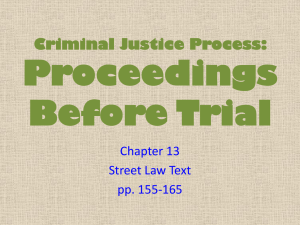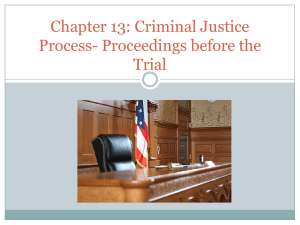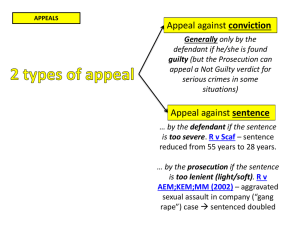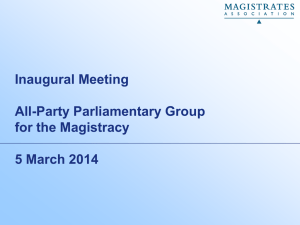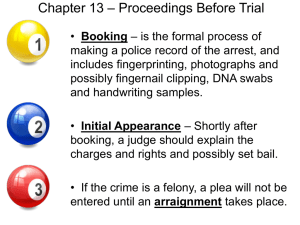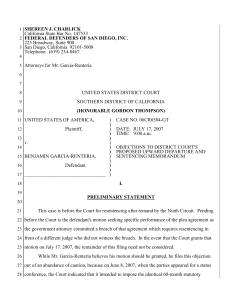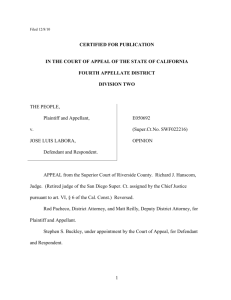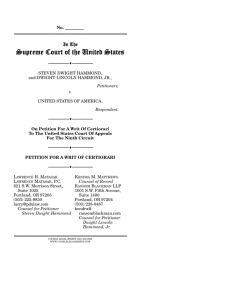C049287
advertisement
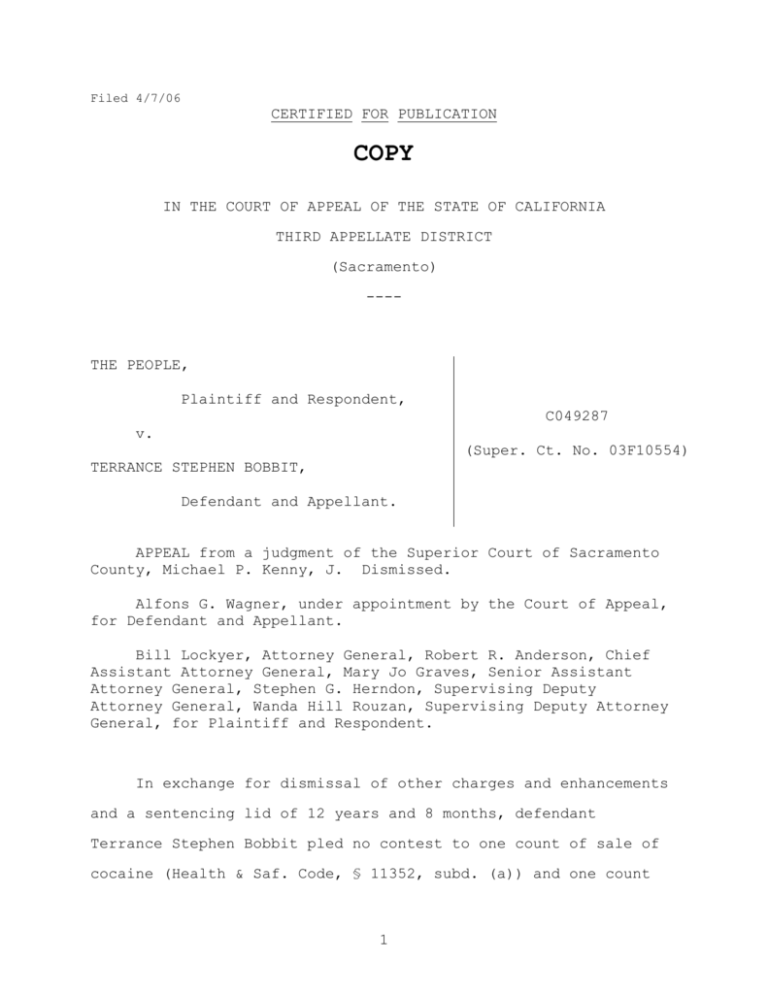
Filed 4/7/06 CERTIFIED FOR PUBLICATION COPY IN THE COURT OF APPEAL OF THE STATE OF CALIFORNIA THIRD APPELLATE DISTRICT (Sacramento) ---- THE PEOPLE, Plaintiff and Respondent, C049287 v. (Super. Ct. No. 03F10554) TERRANCE STEPHEN BOBBIT, Defendant and Appellant. APPEAL from a judgment of the Superior Court of Sacramento County, Michael P. Kenny, J. Dismissed. Alfons G. Wagner, under appointment by the Court of Appeal, for Defendant and Appellant. Bill Lockyer, Attorney General, Robert R. Anderson, Chief Assistant Attorney General, Mary Jo Graves, Senior Assistant Attorney General, Stephen G. Herndon, Supervising Deputy Attorney General, Wanda Hill Rouzan, Supervising Deputy Attorney General, for Plaintiff and Respondent. In exchange for dismissal of other charges and enhancements and a sentencing lid of 12 years and 8 months, defendant Terrance Stephen Bobbit pled no contest to one count of sale of cocaine (Health & Saf. Code, § 11352, subd. (a)) and one count 1 of offering to sell cocaine (ibid.) and admitted that he had suffered a prior serious felony conviction. (Pen. Code, §§ 459, 667, subds. (b)-(i), 1170.12, 1192.7, subd. (c).) The court sentenced defendant to the maximum term permitted under the plea agreement. Defendant thereafter filed a notice of appeal in which he appeals “from all pre-trial rulings, all rulings made at the time of defendant’s plea and the Court’s sentence.” Defendant did not seek, nor was he granted, a certificate of probable cause. (Pen. Code, § 1237.5.)1 The ultimate issue raised on appeal relates to the trial court’s authority to impose an upper term sentence in light of Blakely v. Washington (2004) 542 U.S. 296 [159 L.Ed.2d 403]. This argument is not cognizable on appeal because defendant did not obtain a certificate of probable cause. “‘[A] challenge to a negotiated sentence imposed as part of a plea bargain is properly viewed as a challenge to the validity of the plea itself’ and thus requires a certificate of probable cause. [Citation.]” (People v. Shelton (2006) 37 Cal.4th 759, 766 (Shelton), quoting People v. Panizzon (1996) 13 Cal.4th 68, 79.) 1 Penal Code section 1237.5 provides, “No appeal shall be taken by the defendant from a judgment of conviction upon a plea of guilty or nolo contendere, or a revocation of probation following an admission of violation, except where both of the following are met: [¶] (a) The defendant has filed with the trial court a written statement, executed under oath or penalty of perjury showing reasonable constitutional, jurisdictional, or other grounds going to the legality of the proceedings. [¶] (b) The trial court has executed and filed a certificate of probable cause for such appeal with the clerk of the court.” 2 “[T]he specification of a maximum sentence or lid in a plea agreement normally implies a mutual understanding of the defendant and the prosecutor that the specified maximum term is one that the trial court may lawfully impose and also a mutual understanding that, absent the agreement for the lid, the trial court might lawfully impose an even longer term.” supra, at p. 768.) (Shelton, “[A] provision recognizing the defendant’s right to ‘argue for a lesser term’ is generally understood to mean only that the defendant may urge the trial court to exercise its sentencing discretion in favor of imposing a punishment that is less severe than the maximum punishment authorized by law.” (Ibid.) “Of course, a prosecutor and a defendant may enter into a negotiated disposition that expressly recognizes a dispute or uncertainty about the trial court’s authority to impose a specified maximum sentence--because of Penal Code section 654’s multiple punishment prohibition or for some other reason--and preserves the defendant’s right to raise that issue at sentencing and on appeal.” p. 769, italics added & omitted.) (Shelton, supra, at To the extent some ambiguity exists regarding the meaning of the parties’ agreement, a court should “begin with the language of the plea agreement concerning sentencing, as the trial court recited it on the record” (id. at p. 767), since “[a] negotiated plea agreement is a form of contract, and it is interpreted according to general contract principles. [Citations.]” (Ibid.) The parties did not execute a written plea agreement. reciting the terms of the agreement at the change of plea 3 In hearing, the court stated that, “defendant’s sentencing exposure will be 12 years, 8 months at the reduced credit rate pursuant to the three strikes law.” During colloquy with defendant, the court reiterated, “Further agreement is that you would be pleading for a top sentence of 12 years, 8 months, that would be a lid. You could receive something less than that 12 year, 8 month sentence, but you could also receive that 12 year, 8 month sentence. [¶] Do you understand that?” “Yes, Your Honor.” Defendant responded, At the sentencing hearing, defense counsel asked the court to impose a midterm sentence rather than the upper term the probation department recommended for count one. Defense counsel did not, however, argue that the court did not have the authority to impose an upper term sentence absent jury findings that one or more aggravating factors existed. Blakely v. Washington, supra, 542 U.S. 296 [159 L.Ed.2d 403] was decided on June 24, 2004. The negotiated disposition was placed on the record on February 2, 2005, and sentencing took place on March 2, 2005, both of which occurred well after the highly publicized decision, which dispels any doubt that the issue was not preserved through the oversight of defense counsel. On this record, we conclude as a matter of law that the plea agreement did not preserve, either at sentencing or on appeal, the issue that the court did not have the authority to impose an upper term sentence in the absence of a jury finding 4 of one or more aggravating circumstance(s).2 Without a certificate of probable cause, the appeal must be dismissed. DISPOSITION The appeal is dismissed. CANTIL-SAKAUYE , J. We concur: SIMS , Acting P.J. RAYE , J. 2 Even if we were to decide the matter on the merits, we would reject defendant’s argument based on People v. Black (2005) 35 Cal.4th 1238, 1244, 1254. 5



